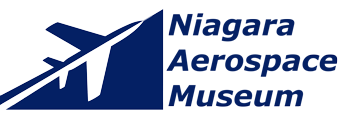Excerpts from the Rocket Belt Pilot’s Manual, By William P. Suitor – former Bell Rocket Belt pilot, with permission of the author.

You, the trainee pilot, strap into the Rocket Belt. It has to fit so you are not hanging on to the control arms as you begin to lift. If this happens movement of the controls would be difficult and the flight erratic. So with the machine positioned comfortably you are ready to learn the basic flight maneuvers. Now, in takeoff position, SLOWLY open the throttle by twisting it counterclockwise with your right hand, adding only enough power to get it about 18 inches off the ground. You’ve now taken off to a hover, and are (in theory) hovering motionless. To move forward, GENTLY press DOWN on the arms; this tilts the rocket tubes slightly to the rear, changing part of the thrust vector from vertical to slightly aft. Remember, action-reaction: with the aft thrust vector (action), you will move forward (reaction). To stop, simply relax this downward pressure on the arms. They raise back up from the built-in control force and give you reverse “braking” action. As you stop, reduce power and land; simple, HA!
Recall that those 1,000+ hungry horses consume 2 ½ pounds of fuel PER SECOND [in operation the Rocket Belt generates over 1,000 horsepower]. Another small but interesting effect you will notice is that, if you hover without changing the throttle setting, you will rise due to the fuel loss. All these little things come into play with one another. The loss of vertical thrust due to forward vectoring is generally offset by the decrease in overall weight due to fuel burn; mind you, this is noticeable only at very low speeds.
Turning requires a combination of yaw and bank. The right hand is the throttle, which controls up and down movement; in the left hand is the yaw control. Yaw is a rotation about the vertical axis. Simply put it is the ability to spin left or right: essentially the “rudder.” The yaw handle is spring-loaded so that it always returns to the neutral (straight-ahead) direction. If twisted to the right the Belt will turn right, twisted to the left the Belt turns left. To bank, you initiate a roll motion by tilting your shoulders a small amount. The pilot clamps his armpit area tightly against the two control arms, and then gradually and gently raises one shoulder while lowering the other. Lower the shoulder on the side you want to turn towards. During high-speed turns, centrifugal force will cause your legs and lower body to swing outward with the turn. I have on occasion made such high-speed turns that my feet and legs actually swung through to be higher than my head. Always keep in mind…a Rocket Belt as no, zero, none, zilch, aerodynamic lifting surfaces (wings). The vertical thrust vector is the ONLY thing holding you up. A sustained hard turn will result in one thing: the flight of an anvil!
Landing from a hover is simply the reverse of taking off. Slowly twist the throttle clockwise to reduce thrust. It must be stressed that, during landing, the instant you feel your toes touch the ground that the power be “chopped.” Remember, you are most likely 40 pounds lighter than when you took off, have 70 pounds on your back, and are putting out at least 198 pounds of thrust [the minimum throttle setting is 60% power]. If you don’t cut the power instantly upon impact, the thrust will bounce you back into the air (action-reaction) and then the weight on your back will start to pull you over. Your reflex action will THEN be to cut power…too late…WHAM!…right on your butt! It hurts, you’re very likely to damage the machine, and the high-pressure tanks might rupture. It’s also very embarrassing.

